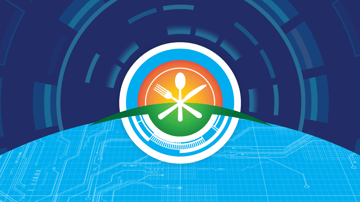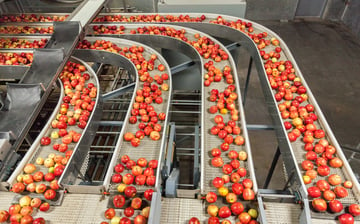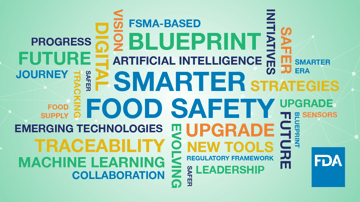The FDA has released the long-awaited strategic blueprint for the New Era of Smarter Food Safety initiative. Learn about their vision for the future of the food supply chain.
The Food and Drug Administration announced their much anticipated strategic blueprint for the New Era of Smarter Food Safety, an initiative for advancing modern, technology-driven approaches to food safety leadership. The strategic initiative was launched in 2019 and focuses on four major pillars:
- Tech-Enabled Traceability and Foodborne Outbreak Response
- Smarter Tools and Approaches for Prevention
- Adapting to New Business Models and Retail Food Safety Modernization
- Food Safety Culture
The new blueprint elaborates on the four core elements that will be driving the initiative, in addition to stating the values and principles the FDA aims to advance through their work. Building on the Food Safety Modernization Act (FSMA), the New Era is designed to forge stronger food transparency at the nexus of policy, people and technological innovation. In the months since the launch of this new initiative, there has been a public meeting, as well as an opportunity for public comment on the FDA’s design and approach. Through these venues, the FDA announced that over 1500 stakeholders have helped shape the initiative since its launch last year.
The New Era in the New Normal
In the announcement video Frank Yiannas, the FDA’s Deputy Commissioner for Food Policy and Response, acknowledged that the COVID-19 crisis had initially diverted the agency’s attention away from the initiative, but it has since become clear that the vision for a more advanced food industry is more relevant than ever in light of the crisis. “We need more modern approaches,” said Yiannas. The supply chain disruption during the initial shock of COVID-19 served as a reminder that smarter tools for visibility and risk prevention can help build resilience, in addition to safeguarding consumers and industry against food safety threats.
FDA Commissioner Stephen M. Hahn, M.D. echoed these sentiments, saying that the New Era for Smarter Food Safety initiative is more important now than ever. The blueprint, said Hahn, is a roadmap for, “concrete and essential action plans.” Through these plans, Hahn expects to not only build a, “digital, transparent, safe food system,” but to further lay a groundwork that bolsters, “innovation and discovery.”
Tech-Enabled Traceability
The new era focuses heavily on enabling a sophisticated and traceable food supply chain. The blueprint states that an initial step will be “completing FSMA Section 204 rulemaking to harmonize the key data elements and critical tracking events needed for enhanced traceability.” This means efforts need to be made to digitize and, “speak the same language,” says Hahn, so that everyone can visualize their supply chain.
Once this foundation has been laid, supply chain stakeholders can leverage traceability technology to exchange information more freely and accurately, which, according to the blueprint, will allow for new efficiencies, intelligent prevention as well as greatly reducing the “time it takes to identify the origin of a contaminated food tied to a recall and/or outbreak.” The FDA mentions standards bodies such as GS1 and Codex in the blueprint, and advocates for adoption of food business standards to ensure interoperability between entities.
The blueprint also states that the FDA will “design and execute pilots on concepts needed for traceability to further scale, such as testing interoperability and public-private data sharing.” This development follows the successful completion of the first phase of an interoperability pilot between GS1 US, FoodLogiQ, IBM, Ripe.io and SAP. The FDA will prioritize and focus on high-risk foods for their pilots, such as leafy greens, keeping in line with existing traceability rules and regulations.
While it is unclear what incentives or additional rules will be enacted around tech-enabled traceability, the blueprint states that the FDA will “explore ways to recognize adoption of strong traceability systems,” and show a commitment to supporting industry adoption by illustrating value and engaging with “non-traditional stakeholders (e.g. financial industry, technology firms, insurance companies).”
Prevention and Recall Modernization
Supply chain digitization and visibility will help facilitate action-oriented insights spanning multiple stakeholders within any chain. In order to properly gather and leverage these insights, the New Era for Smarter Food Safety blueprint includes language on both food safety incident prevention and response.
To help mitigate risks, the FDA will support enhanced communication tools for root cause analyses, and explore the use of intelligent systems, machine learning and predictive analytics. During the announcement, Hahn indicated early success of a recent AI proof-of-concept project evaluating historical shipment data, which improved the agency’s ability to know which shipments to inspect by 300%. With high quality, digital datasets, these models can help assess risks throughout the supply chain, improving the efficacy and ROI of prevention and inspection programs.
As more food businesses adopt data collection and housing technologies, supply chain risk management will become more sophisticated. According to the blueprint, the use of technologies that monitor product risks factors based on business models, time, temperature or traceability data will be encouraged. The FDA will further support prevention efforts by exploring public-private “data trusts” that can help paint a more holistic picture of food supply chains, according to the blueprint. The agency also plans to modernize its own mechanisms for auditing and reporting, by “leveraging mobile inspection technology and digital reporting tools.”
To advance more effective food safety responses, the FDA has included recall modernization in the new blueprint. As part of the initiative, they will “explore the use of a broad spectrum of technologies to enhance external communications and the effectiveness of recalls.” The blueprint indicates a heavy focus on public communications, stating that the government will create an app for recall notifications and food safety information, in addition to providing other channels for alerting end-consumers of recalled products. In order to achieve this vision, identifying recalled products throughout the supply chain will need to be far more efficient. Recall execution will need to be immediate, says Hahn, “I mean minutes. Not days, weeks, or even longer.” Many in the industry will need to catch up, but food recall technology can help reduce withdrawal times by orders of magnitude.
A Commitment to Consumers
Ultimately, the beating heart of the New Era of Smarter Food Safety remains a commitment to ensuring public safety. In the digital age, this means supporting and advancing “ideas whose time has come,” and, according to Yiannas, keeping “pace with the changing world.”
The blueprint calls for collaboration, concluding, “Working together and thinking outside the box, we’ll create a more digital, traceable and safer food system that advances food safety, improves the quality of life for consumers in this country and all over the world, and better prepares us for unexpected events that could impact the food supply.”
FoodLogiQ supports this commitment, alongside our many partners throughout the food industry.
Other posts you might be interested in
View All Posts
Food Safety
7 min read
| October 27, 2020
The First 100 Days of the New Era of Smarter Food Safety
Read More
Trustwell News
6 min read
| December 17, 2021
FoodLogiQ Connect Surpassing 100 Million Critical Tracking Events
Read More
Food Safety
5 min read
| December 18, 2019

